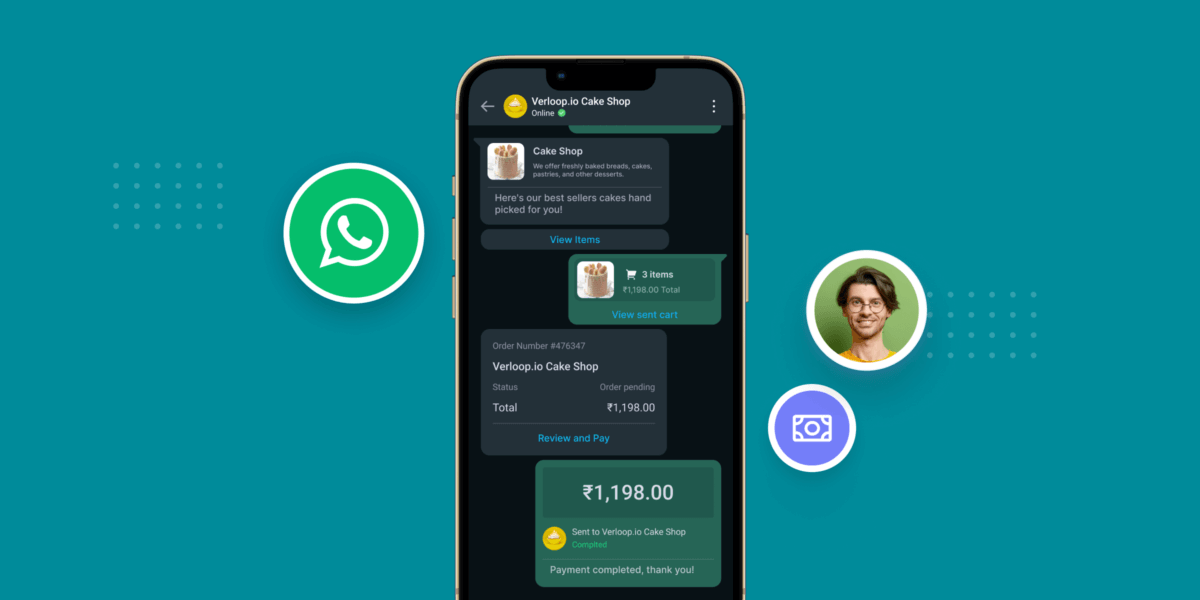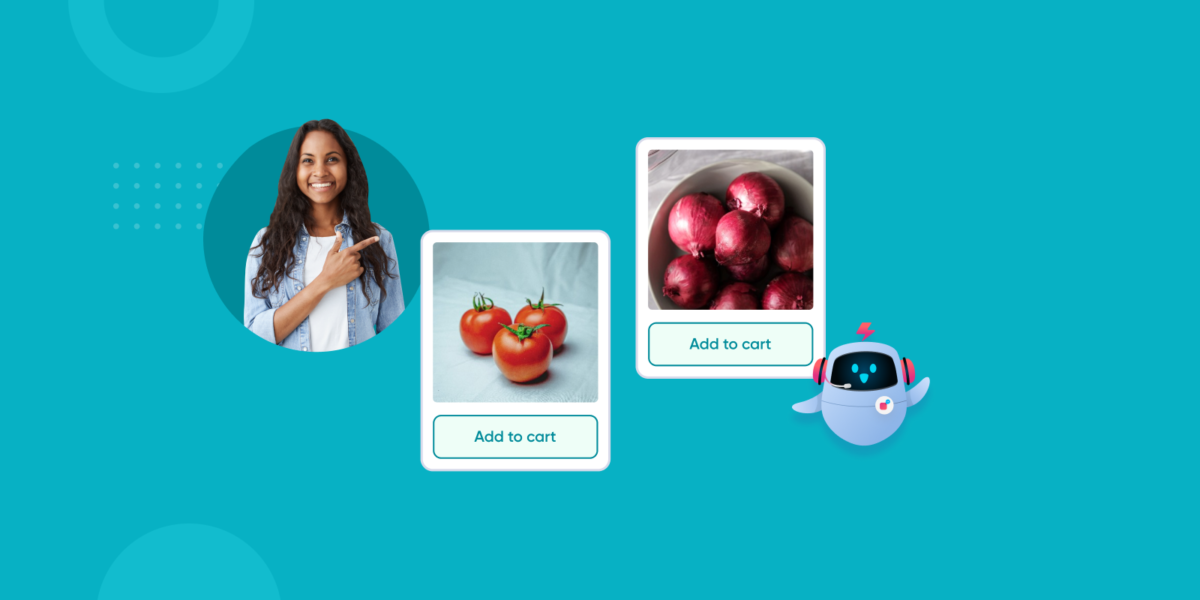15 Best Strategies to Improve Customer Service in 2025
- February 28th, 2025 / 6 Mins read
-
 Aarti Nair
Aarti Nair

15 Best Strategies to Improve Customer Service in 2025
- February 28th, 2025 / 6 Mins read
-
 Aarti Nair
Aarti Nair
Good customer service is the backbone of any successful business, no matter its size. A single bad experience can cause 73% of customers to switch brands, according to a recent study. This highlights the ever-evolving expectations of customers and the challenges brands face in meeting them.
Moreover, satisfied customers can contribute up to three times more revenue to a brand compared to dissatisfied ones. The same study reveals that over 80% of customers believe the experience a brand offers is just as important as its products or services. Delivering exceptional customer support not only strengthens loyalty but also gives your company a competitive edge by setting it apart in terms of service quality.
In this blog, we’ve consulted industry experts and curated the top 15 strategies to improve customer experiences and help your business provide the support your customers expect.
Top 15 Strategies to Improve Customer Experience
As a business owner or a leader in your industry, the focus is always on scaling your business. But to scale your business, just improving your product or services won’t take you far. In the time where customers heavily rely on reviews of brands, you don’t want a bad experience provided by any of your business executives to take your brand name down and thus impact the overall revenue and profitability pipeline.
1. Utilise AI-Driven Customer Support Features
AI-powered customer service solutions are designed to improve how businesses interact with their customers. Using clever tools powered by natural language processing (NLP), machine learning (ML) and large language models (LLM), these systems can handle customer queries automatically, making life easier for both companies and customers.
Think of it as having a super-smart assistant that never takes a break! AI tools can boost customer focus, speed up response times, and offer more precise solutions. Whether it’s answering simple questions or solving more complex problems, these AI solutions help businesses provide consistent and customer-friendly experience, without breaking a sweat or being impacted by human fatigue.
2. Utilise Chatbots for Customer Service
Chatbots are no longer just a trend—they’re here to stay, with the market expected to hit $10 billion by 2025, according to the latest reports.
Why?
Because customers today crave self-service options. No one likes waiting in long queues, especially when chatbots can reduce wait times to mere seconds and speed up resolution times by over 78%. In fact, more than 90% of issues are solved in just 10 messages or fewer.
Imagine the old days of waiting hours—or even days—for a response. Now, with chatbots, help is instant, making long queues a thing of the past! These smart assistants, powered by advances in AI and machine learning, allow users to get support on the go, handling multiple tasks at once. Simply put, chatbots are like having a helpful support team available 24/7.
3. Personalise Customer Experience
The ability to personalise is essential for enhancing the customer experience in every way. Customers now expect their interactions to reflect their individual needs and preferences. With the help of data and AI, businesses can offer tailored services that meet these expectations, ultimately delivering a better and more satisfying experience.
While any Tom, Dick, or Harry can make suggestions based on customer data, true personalisation requires systems that allow users to track preferences and past interactions seamlessly. For example, imagine a customer regularly purchases skincare products from a brand. A smart system would remember their preferred product type and even recommend new items based on past purchases, making the shopping experience smoother and more enjoyable. In fact, 77% of business leaders recognise that providing personalised support not only enhances the customer journey but also boosts retention.
Otherwise, think of airlines offering tailored travel deals based on a customer’s previous flight history or favourite destinations. By remembering the little details, businesses can create moments that matter, ensuring customers keep coming back for more.
4. Opt for Omnichannel Customer Service Strategies
Omnichannel customer service ensures a seamless experience for consumers across social networks, email, and chat. No matter which platform customers use, they should feel like they’re receiving the same level of attention and support, creating a consistent and hassle-free journey.
For omnichannel service to truly work, all customer service channels must be integrated to provide uniform data across the board. Imagine a customer starting a conversation on social media, then switching to email—your system should keep up without missing a beat.
Educating your team on how to efficiently use different platforms for interaction is also key to ensuring smooth transitions and avoiding gaps in communication. It’s no surprise that 31% of customers now expect brands to offer omnichannel support, and with 10% of leaders planning to invest in AI chatbots and omnichannel strategies by 2025, this approach is becoming essential for staying ahead in the game.
5. Implement the applications of automation in customer service
Automating customer service allows businesses to manage multiple requests simultaneously, freeing human agents to focus on more complex queries. Routine tasks like answering frequently asked questions, managing ticketing systems, and handling repetitive transactions can be seamlessly automated, reducing strain on support teams.
Start by identifying routine activities that, when automated, will significantly boost productivity. For example, automating responses to common queries like “Where’s my order?” or “How do I reset my password?” can save time and improve response speed.
However, it’s important to ensure that automation still meets customer expectations. Regularly check that automated systems maintain a balance between efficiency and quality, so customers feel supported, not sidelined.
6. Adopt AI-Driven Customer Service Tools
AI-powered tools provide invaluable insights into customer behaviour, preferences, and satisfaction through advanced analytics. By gathering data from multiple touchpoints, companies can analyse trends, assess performance, and make well-informed decisions that enhance customer service, all with remarkable ease.
Set up Key Performance Indicators (KPIs) using analytics tools to track crucial metrics like response time and customer satisfaction levels. These insights allow businesses to make targeted improvements in their service delivery. For example, if response times are lagging, AI can identify the bottlenecks, helping you streamline processes.
Integrating AI-driven tools with a CRM system can also help you track the “voice of the customer” across various channels. This integration provides a full picture of customer sentiment, enabling companies to respond proactively and adjust strategies based on real-time feedback. With this, businesses can truly put customer needs at the heart of their service approach.
7. Enhance self-service options
Self-service solutions empower customers to resolve their issues independently, making the process more efficient when done right. Tools like knowledge bases, FAQs, and interactive guides are set to become even more popular in 2025, as customers increasingly prefer handling simple queries on their own.
To make self-service truly effective, create clear, user-friendly content that is both informative and easy to navigate. Whether it’s a detailed FAQ section or a well-organised knowledge base, the content should address common concerns and guide customers through the solution. Additionally, regularly update the material to ensure it stays relevant and useful.
With 67% of customers preferring self-service over speaking to a support agent, and 91% willing to use a knowledge base if it meets their needs, it’s clear that investing in self-service can save time and resources. Plus, these interactions cost 30% less than live support, making them a win-win for both customers and businesses.
8. Focus on real-time support
Remote support is essential for addressing urgent customer issues and boosting overall satisfaction. Tools like live chat and real-time monitoring allow businesses to respond swiftly to customer queries and problems, ensuring they’re resolved before frustration sets in.
For example, imagine a customer struggling with a technical issue while trying to place an order online. If a live chat option is available, they can instantly get help without having to abandon their purchase. Be responsive during peak times when queries are more frequent, such as weekends or sales periods.
Additionally, use real-time monitoring tools to manage incoming complaints as they happen. For instance, a travel company could monitor delays or cancellations and reach out to affected customers instantly, offering solutions before they even ask. This proactive approach keeps customers informed and reassured, making them feel valued.
9. Develop a Customer-Centric Culture
A customer-centric culture means that every employee, regardless of their role, is focused on customer satisfaction. By training staff to adopt this mindset, businesses can significantly improve service quality and create lasting customer loyalty.
Regularly conduct training and development programs that emphasise the core principles of customer service. For example, frontline staff can be taught how to handle difficult customers with empathy, while back-office teams can learn how their work impacts the overall customer experience.
Additionally, actively seek input from employees about ways to enhance customer service. A support agent who deals with customers daily may have invaluable suggestions on improving response processes or personalising interactions. By involving your team in shaping customer-centric strategies, you ensure they feel invested in delivering outstanding service.
10. Utilise Predictive Analytics
Predictive analytics uses past data to forecast future customer behaviour, allowing businesses to anticipate needs and prepare solutions in advance. This proactive approach enhances the customer experience by providing timely assistance and addressing areas where customers might need help before they even ask.
Start by adopting predictive analytics tools to forecast customer behaviour and preferences. For example, if your data shows that customers frequently search for product reviews before making a purchase, you can pre-emptively offer detailed reviews and comparisons to streamline their decision-making process.
Use this data to guide product offerings and service enhancements. If analytics reveal a trend towards certain features or services, focus on improving those areas to meet evolving customer expectations. This way, you not only stay ahead of the curve but also provide a more tailored and satisfying experience for your customers.
11. Integrate Voice Assistants
Voice assistants are at the forefront of AI technology, allowing customers to access services without typing a single word. These smart tools can handle simple tasks like setting alarms or fetching information, making them invaluable for streamlining customer service interactions.
Develop applications for voice assistants that align with your customer service objectives. For instance, create a voice-enabled feature that lets customers check their order status or schedule appointments hands-free.
Ensure that the voice assistant provides accurate and relevant responses. Regularly update the system to handle new queries and refine its ability to understand various accents and phrases. With the global voice recognition market projected to soar from nearly $12 billion in 2022 to around $50 billion by 2029, investing in voice technology is not just a trend but a strategic move towards enhancing customer service.
12. Provide Multilingual Support
In a global market, multilingual support services are essential for addressing the diverse needs of customers. Providing support in multiple languages not only simplifies communication but also helps achieve higher levels of customer satisfaction and business success.
Ensure that customer care is available in the languages your customers are most likely to use. For instance, if you have a significant customer base in Spain and Germany, offering support in Spanish and German can greatly enhance their experience.
Utilise translation tools and hire multilingual staff to handle customer interactions effectively. These tools can assist in real-time translations, while multilingual employees can provide a personal touch and better understand cultural nuances. By investing in these resources, you can bridge communication gaps and ensure that all customers receive the support they need.
13. Foster a Feedback-Driven Environment
Stimulating and acting on customer feedback is crucial for continuous improvement. Businesses now need to rethink how they gather, analyse, and utilise this feedback to refine their services and meet customer expectations more effectively.
Collect feedback through various channels such as questionnaires, peer reviews, and dedicated feedback forms. These methods can help you gather diverse opinions and insights from your customers.
Invest in robust data analysis to pinpoint areas needing improvement. For example, if feedback highlights frequent issues with a particular service, use these insights to make targeted enhancements. According to recent data, 42% of customer service professionals using AI find it invaluable for collecting and analysing customer feedback. This technology helps streamline the process, offering deeper insights and enabling businesses to act swiftly on feedback, leading to better service and happier customers.
14. Ensure Data Privacy and Security
As customer data becomes increasingly sensitive, safeguarding this information is paramount. Ensuring the proper use of data not only protects customers but also builds their trust by demonstrating a commitment to privacy and security.
Adhere to data protection regulations and compliance requirements set by legal and regulatory authorities. This includes following standards such as the GDPR in Europe or CCPA in California, which outline how customer data should be handled and protected.
Establish routine checks to review and enhance your Data Security Controls, such as those recommended by the Cloud Security Alliance’s Cloud Controls Matrix (CCM). Regularly assessing these controls helps identify and address potential risks, ensuring that customer data remains secure and trust in your business remains strong.
15. Provide Professional Training for Staff
To maintain high-quality customer service, it’s essential to keep employees up-to-date with the latest technologies and best practices. Continuous training and professional development ensure that your team remains proficient and can adapt to evolving customer expectations.
Organise regular seminars and workshops to introduce new technologies and refresh customer service skills. For instance, you could host sessions on the latest AI tools or effective communication strategies to keep your team sharp.
Additionally, emphasise the importance of obtaining certifications related to customer service excellence. Certifications in areas such as advanced communication techniques or new CRM systems can enhance your team’s capabilities.
Running regular quality audits is crucial for ongoing improvement. Tools like Verloop.io’s Sparks, powered by LLM, can automate quality audits, providing real-time feedback to agents. This helps in tailoring training programs to address specific areas of improvement, ensuring that employees receive personalised development and can continually enhance their performance.
TL;DR
A single negative experience can drive 73% of customers to switch brands, while satisfied customers can boost your revenue by up to three times. To stay ahead, consider these top 15 strategies:
- Utilise AI-Driven Customer Support: Leverage AI for faster, more accurate responses.
- Use Chatbots: Reduce wait times and handle multiple requests effortlessly.
- Personalise Customer Experience: Tailor interactions based on customer data.
- Opt for Omnichannel Support: Ensure seamless service across all platforms.
- Implement Automation: Automate routine tasks to enhance efficiency.
- Adopt AI Tools: Gain insights and improve service through analytics.
- Enhance Self-Service: Provide robust self-help options to save time and resources.
- Focus on Real-Time Support: Use live chat and monitoring for immediate assistance.
- Develop a Customer-Centric Culture: Train your team to prioritise customer satisfaction.
- Utilise Predictive Analytics: Anticipate customer needs and prepare in advance.
- Integrate Voice Assistants: Offer hands-free assistance for common tasks.
- Provide Multilingual Support: Cater to a global audience with language options.
- Foster a Feedback-Driven Environment: Use customer feedback to drive improvements.
- Ensure Data Privacy and Security: Protect sensitive customer information.
- Provide Ongoing Professional Training: Keep your team updated with the latest practices and technologies.
Elevate Your Customer Service Game
Exceptional customer service isn’t just a nice-to-have—it’s a necessity. By implementing these 15 strategies, you can transform your customer interactions and significantly enhance satisfaction. From harnessing the power of AI to providing multilingual support and continuous staff training, these approaches will help you stay ahead of the curve and build lasting customer loyalty.
At Verloop.io, we are advancing beyond traditional approaches to offer strategic conversational AI solutions that will enhance the effectiveness of your customer service. Our solutions assist companies in engaging chatbots, managing personalised interactions, and deploying automated responses efficiently. When you are ready to change your customer service strategy to a new level, please request a demo and see how Verloop.io will help you attain your objectives. Let us pull together to create superb customer service!






